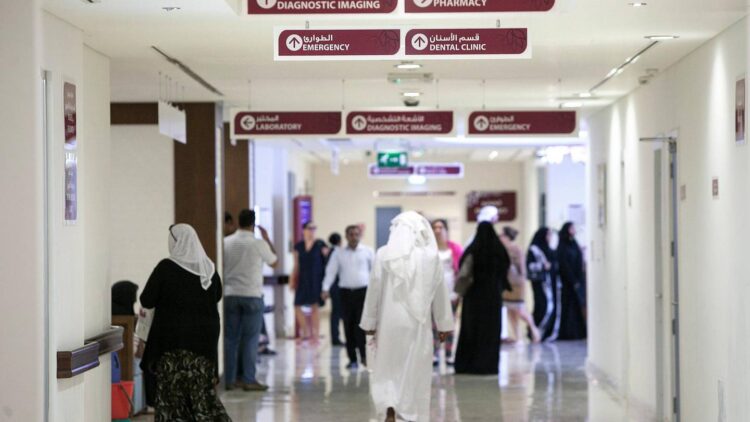The world has watched the growth of Dubai in amazement. From being a small port and fishing village less than a century ago, it is now an incredible global metropolis with a population of well over 3 million people. It attracts new citizens and elite businesses from all over the world thanks to its reputation as a forward-thinking, ambitious and highly successful city.
No less is true of Dubai’s healthcare system; it is also ultra-modern, progressive and highly respected. How has this been achieved?
Here, we look at how Dubai’s healthcare system is built, how it has achieved such great successes, and how it is likely to develop in the future.
How does Dubai’s healthcare system work?
The Dubai government strives to bring excellent healthcare to its residents. It runs a highly organized system that prioritizes gold standard care. The Dubai Health Authority and the national Emirates Health Authority monitor care and standards.
The government invests heavily in healthcare. In 2019, almost three-quarters of the expenditure for healthcare was provided by the government. However, the private sector is set to overtake the government in its investments. Private healthcare is currently growing fast.
The Dubai Clinical Services Capacity Plan (DCSCP) is in charge of monitoring the need for additional healthcare provision. They evaluate the supply of healthcare services in both the private and public sectors to ensure that needs are met. Their assessments also include checking that enough high-caliber medical staff are being trained or recruited to fill gaps in services.
Medical insurance is compulsory for Dubai residents and employers must provide cover for employees. There is a fantastic range of choices for care available in the private sector and there are several public hospitals, too.
Dubai healthcare: 5 interesting facts
If you were in any doubt that Dubai’s healthcare has quickly grown to become one of the best in the world, here are some fascinating facts.
- Dubai has approximately 181 doctors for every 100 000 patients.
- The emirate doubled its number of doctors and dentists between 2012 and 2017, and pharmacists quadrupled.
- USD 16 billion is invested per annum in healthcare.
- 500,000 people were expected to visit Dubai for medical tourism in 2020.
- There are 12 new hospitals in Dubai and 38 hospitals in total.
How Dubai has developed its world-class health system so quickly
These are the main factors behind the growth of the city’s healthcare system.
The Dubai Health Strategy
The government-led Dubai Health Strategy sought to significantly improve healthcare between 2016 and 2021. This ambitious strategy was inspired by the vision of His Highness Sheikh Mohammed Bin Rashid Al Maktoum, Vice President and Prime Minister of the UAE and Ruler of Dubai, to give his people access to the very finest healthcare as soon as possible. The program aspired to make Dubai a global leader in healthcare.
It set out three key goals:
- To drive and ensure compliance and accountability through an Innovative Health Governance Framework.
- To protect and improve population health.
- To ensure patient happiness by providing world-class healthcare services.
The Dubai Health Strategy identified 15 strategic missions that would meet these goals. They covered a broad range of healthcare categories, including public health, mental health, chronic disease management, medical tourism, and medical informatics and technology. Within these 15 missions, there would be 100 separate initiatives, all designed to drive progress towards a more efficient, responsive, high-quality healthcare system overall.
These initiatives were backed up by immediate and then further sustained public and private investment through the five years. Key performance indicators as set by the UAE government as part of its Vision 21 strategy are ready to evaluate the progress made.
Investment in technology
In line with the reputation Dubai has for advancements in technology, it is committed to maximizing the use of high-tech medical applications and services.
Priorities set include the increased availability of telemedicine, improved information systems including better patient record systems, and better access to technology for robotic-assisted surgery.
3D printing has become very important to the Dubai healthcare system. The technology is now regularly used in oncology, cardiology and orthopedics treatments, amongst other specialties.
As a result of this drive to more widely use the latest technology, many consider Dubai’s hospitals to be amongst the most state-of-the-art in the world.
Commitment to medical research and education
It is vital that continued investment is made in the next generation of healthcare professionals and ensuring that the current generation is trained in using the latest advancements in their field. Equally vital is the commitment to continuous research that will lead to breakthroughs in understanding disease, improvements in patient experience and groundbreaking treatments.
Dubai is aiming to lead the way in medical research and education. The Dubai Academic Health Corporation is a new body that integrates medical research and education with operational healthcare facilities. MBRU is Dubai Healthcare City’s first medical university running undergraduate and postgraduate degrees, and operating exceptional research. MBRU careers are varied and well-rewarded.
To attract graduates and professionals from all over the world, the government has also developed strategies to place global talent in Dubai’s hospitals, clinics and research facilities.
Dubai seeks to create a supportive environment for education and research and has invested in
several world-class medical research facilities in Dubai, including the new Mohammed Bin Rashid Centre for Medical Research, which focuses on COVID-19 and other viral diseases.
What’s next?
Expect to see further expansion of healthcare facilities in Dubai. Healthcare spending is set to rise to 4.6% of GDP in 2026 and to a further 5.1% in 2029. With more investments planned, there will be an increase in facilities, and advancements within those that are already in place.
Private provision, population growth and the consequences of introducing a new retirement visa to attract older citizens will help shape how these facilities and services will look. An increased prevalence of chronic, lifestyle-related diseases like diabetes will also have an impact. The recovery of medical tourism after the lifting of COVID-19-related travel restrictions is also set to be a priority. Finally, further expansion of the Golden Visa Scheme to attract world-class medical professionals to Dubai will also help the emirate’s healthcare services to continue to grow both in size and quality.
















